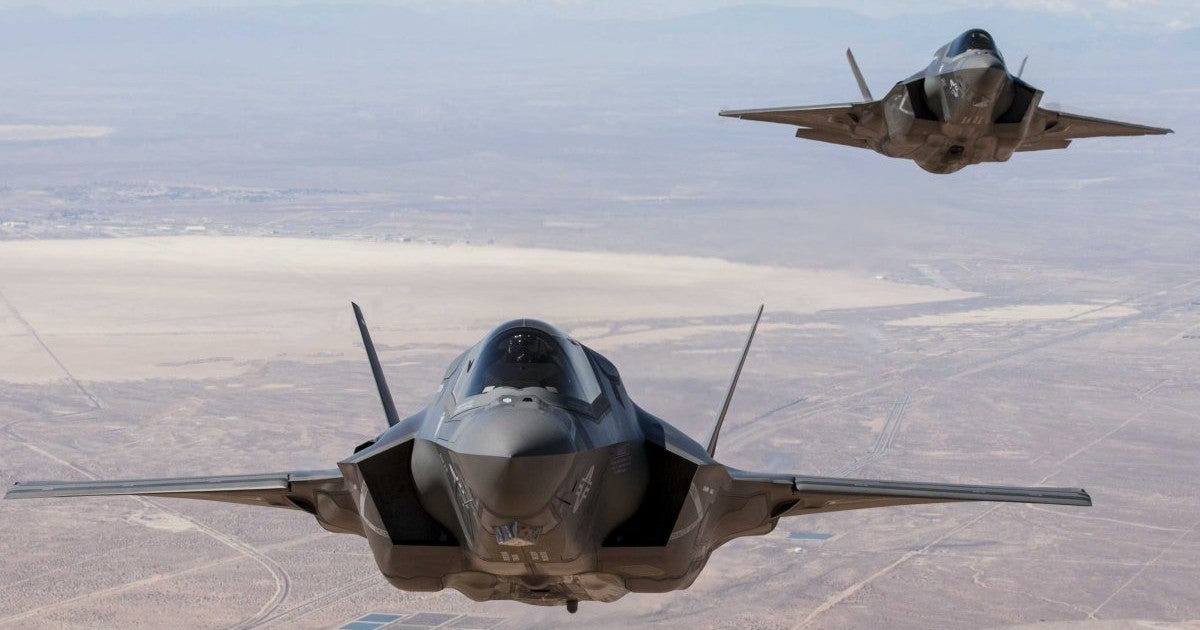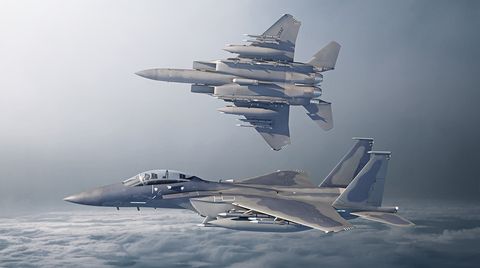Token
Senior Airman
In trying to follow this conversation, when I see the term "dB" I'm thinking, as a musician, that radar -- and detection -- work on a logarithmic scale as well?
They don't work on a log scale, but we often express and measure things related to them on a log scale.
For things like radar we don't have to use the dB scale, it is just convenient because of the large numbers and ratios involved.
For example, a radar might have a peak power of say 100,000 Watts. It might have an antenna gain factor (how much the antenna amplifies the signal) of 1258. It might have a feedline (feedline, be it waveguide or something else, takes the energy from the transmitter to the antenna) loss ratio of 2.2 (you put power in one end of the feedline and less power comes out the other end of it).
These are the total numbers I need to determine the radars Effective Radiated Power (ERP). ERP is one of the important factors in determining radar performance. To use these numbers to determine the ERP the process is the transmitter power divided by the feedline loss ratio, and multiplied by the antenna gain. Peak transmitter power divided by the feedline loss would be 100,000/2.2=45454.5 Watts at the antenna. Multiply that by the antenna gain, 45454.5x1258=57,181,761 Watts ERP.
But, doing it in dB it all becomes addition and subtraction, and working with much smaller numbers. The transmitter peak power (100,000 Watts) is +80 dBm, the feedline loss (the ratio of 2.2) is -3.4 dB, and the antenna gain (gain factor of 1258) is 31 dB (could be either dBi or dBd, not important for this discussion). I just take those numbers and add them up, 80+(-3.4)+31=107.6 dBm ERP. ERP is typically expressed in either dBm (dB based on 1 milliWatt) or dBW (dB based on 1 Watt). I have determined the ERP in dBm, to convert to dBW simply subtract 30, making the ERP 77.6 dBW.
Note that I did not carry any of the numbers in dB out past the tenths digit, and this has caused some rounding errors. I easily could have carried them out, for greater accuracy, but typically working to a tenth of a dB results in errors that are insignificant for normal operations. Such accuracy may be important for lab work, but typically not in the field. In this case the rounding errors have caused the 57,181,761 Watt ERP to become (converting 107.6 dBm back to Watts) 57,543,994 Watts, an error of under 0.1%. As I said, I could have maintained accuracy by not rounding.
But why all this converting back and forth, doing math, just to have easier math? Because we typically don't do that, instead we measure many things directly in dB to begin with, there is typically very little conversion to do.
Antenna gain is most often expressed in dB (either dBi or dBd), so the data on the antenna would say 31 dB of gain, not a gain factor of 1258.
Loss ratios can be, and normally are, directly measured in dB. It would be uncommon to call the feedline loss ratio 2.2, but would be very common to say the feedline has 3.4 dB of loss.
And power meters for radar and similar applications can be set to read out the power in dB, typically either dBm or dBW.
Everything (at least every numeric value or ratio) can be expressed in dB. $1 can become 0 dB$, so 1.3 trillion dollars would be 121.14 dB$, half of 1.3 trillion dollars would be 3 dB lower, or 118.14 dB$.
The one way space loss (how much the signal is reduced as it travels through space) of a 10 GHz radar tracking a target 50 km away is 1 / 438500000000000 what it was when it left the antenna. Or, using the ERP in our example at the top of my post, 57181761 Watts/ 438500000000000 space loss. This means the signal level at the target is .0000001304 Watts, or 0.0001304 milliWatts.
But that space loss, like any other number or ratio, can be expressed in dB also, and we end up with -146.42 dB (in fact, formulas can calculate it directly in dB, no need to calculate it and then convert). By doing it in dB, we start with the 107.6 dBm ERP above, subtract the space loss of 146.42, and end up with -38.82 dBm at the target. If you wanted to you could convert the -38.82 dBm to milliWatts (and find it is 0.000131 mW), but why do that when the rest of what you want to do is probably still in dB? For example, the receiver MDS, the smallest possible signal the radar can detect, will most often be expressed in dBm.
T!
Last edited:




